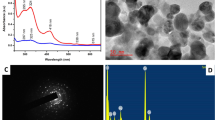Abstract
Antioxidant properties of 2,3,5,7,8-pentahydroxy-6-ethyl-1,4-naphthoquinone (echinochrome A) were linked with the scavenging of peroxy radicals in liposomes, trapping of superoxide anion radicals, and binding of ferrous ions to inactive complexes in the aqueous phase. The antioxidant property of 6-ethyl-2,3,7-trimethoxy-5,8-dihydroxy-1,4-naphthoquinone (trimethoxyechinochrome A) was negligible. Autooxidation of echinochrome A was increased in basic media according to the degree of its dissociation. Autooxidation of polyvalent anions in basic media was accompanied by generation of naphthosemiquinone and superoxide anion radicals as free radical intermediates. An increased rate of echinochrome A autooxidation was noted in the presence of calcium ions. This was explained by a shift of pK of Ca2+–echinochrome A complexes toward acidic pH comparably with echinochrome A. Echinochrome A possessed pronounced mutagenic activity, while trimethoxyechinochrome A was inactive in the Salmonella/mammalian microsome reverse mutation assay (Ames test) for all examined cells (TA98, TA100, TA1537). Comparison of the chemical and biological activity of echinochrome A and trimethoxyechinochrome A demonstrated the key role of the β-hydroxyl groups in the 2nd, 3rd, and 7th naphthol cycle positions. The \({\text{O}}_{\text{2}}^{\bar \cdot } \) and naphthosemiquinone radicals generated in the redox transition of 2,3-oxygroups may be the reason for the strongly pronounced mutagenicity of echinochrome A.
Similar content being viewed by others
REFERENCES
Thomson, R. H. (1971) Naturally Occurring Quinones, 2nd ed., Academic Press, London-New York, pp. 257-276.
Boguslavskaya, L. V., Khrapova, N. G., and Maksimov, O. B. (1985) Izv. Akad. Nauk SSSR. Ser. Khim., No. 7, 1471-1476.
Boguslavskaya, L. V., Maksimov, O. B., Khrapova, N. G., and Kulesh, N. I. (1988) Izv. Akad. Nauk SSSR. Ser. Khim., No. 2, 283-288.
Lebedev, A. V., Boguslavskaya, L. V., Levitsky, D. O., and Maksimov, O. B. (1988) Biokhimiya, 53, 598-602.
Boguslavskaya, L. V., Burlakova, E. B., Kol.tsova, E. A., and Maksimov, O. B. (1990) Biokhimiya, 53, 928-932.
Lebedev, A. V., Ivanova, M. V., Krasnovid, N. I., and Kol.tsova, E. A. (1999) Vopr. Med. Khim., 45, 123-130.
Lebedev, A. V., Ivanova, M. V., and Krasnovid, N. I. (1999) Biochemistry (Moscow), 64, 1273-1278.
Shvilkin, A. V., Afonskaia, N. I., Cherpachenko, N. M., Sadretdinov, S. M., Novikov, V. L., Anufriev, V. P., Kol.tsova, E. A., Maksimov, O. B., Levitsky, D. O., and Ruda, M. Y. (1991) Kardiologiya, 31, 81-82.
Zakirova, A. N., Lebedev, A. V., Kukharchuk, V. V., Mishchenko, N. P., and Fedoreev, S. A. (1996) Ter. Arkh., 68, 12-14.
Zakirova, A. N., Ivanova, M. V., Golubiatnikov, V. B., Mishchenko, N. P., Kol.tsova, E. A., Fedoreev, S. A., Krasnovid, N. I., and Lebedev, A. V. (1997) Eksp. Klin. Kardiol., 60, 21-24.
Anufriev, V. P., Novikov, V. L., Maximov, O. B., Elyakov, G. B., Levitsky, D. O., Lebedev, A. V., Sadretdinov, S. M., Shvilkin, A. V., Afonskaya, N. I., Ruda, M. Y., and Cherpachenko, N. M. (1998) Bioorg. Med. Chem. Lett., 8, 587-592.
Vinokurov, A. A., Alabovsky, V. V., Shul′zhenko, V. S., Ivanova, M. V., and Lebedev, A. V. (2001) Vopr. Med. Khim., 47(3).
O.Brien, P. J. (1991) Chem.-Biol. Interact., 80, 1-41.
Tikkanen, L., Matsushima, T., Natori, S., and Yoshihira, K. (1983) Mut. Res., 124, 25-34.
Ollinger, K., and Brunmark, A. (1991) J. Biol. Chem., 266, 21496-21503.
Ollinger, K., Buffinton, G. D., Ernster, L., and Cadenas, E. (1990) Chem. Biol. Interact., 73, 53-76.
Wardman, P. (1989) J. Phys. Chem. Ref. Data, 18, 1637-1755.
Ksenzhek, O. S., and Petrova, S. A. (1986) Electrochemical Properties of the Reversible Biological Redox-Systems [in Russian], Nauka, Moscow, pp. 67-105.
Maron, D. M., and Ames, B. N. (1984) in Handbook of Mutagenicity Test Procedures (Kilbey, B. J., Legator, M., Nichols, W., and Ramel, C., eds.) 2nd ed., Elsevier Science Publishers, Amsterdam, pp. 93-142.
Doson, P., Elliott, R., Elliott, U., and Jones, K. (1991) Handbook of Biochemists [Russian translation], Mir, Moscow, p. 301.
McCord, J. M., and Fridovich, I. (1968) J. Biol. Chem., 244, 5753-5760.
Marshall, A. G. (1978) Biophysical Principles. Properties, Techniques, and Application [Russian translation], Vol. 1, Mir, Moscow, pp. 87-91.
Ames, B. N. (1972) in Mutagenic Effects of Environmental Contamination, Academic Press, New York, pp. 57-66.
De Pierre, J., and Dallner, G. (1979) Biochemical Research of Membranes [Russian translation], Mir, Moscow, pp. 75-124.
Bielski, B. H. J., Shiue, G. G., and Bajuk, S. (1980) J. Phys. Chem., 364, 233-235.
Bielski, B. H., and Cabelli, D. E. (1991) Int. J. Radiat. Biol., 59, 291-319.
Malinovskaya, G. V., Chizhova, A. Ya., Anufriev, V. Ph., Glazunov, V. P., and Denisenko, V. A. (1999) Izv. Akad. Nauk SSSR. Ser. Khim., No. 8, 1607-1609.
Bors, W., Michel, C., Saran, M., and Lengfelder, E. (1978) Biochim. Biophys. Acta, 540, 162-72.
Pribil, P. (1975) Analytical Application of EDTA and Related Compounds [Russian translation], Mir, Moscow.
Aver.yanov, A. A., and Lapikova, V. P. (1988) in Free Radicals in Chemistry, Biology and Medicine [in Russian], Riga Medical Institute, Riga, pp. 203-222.
Hakura, A., Mochida, H., Tsutsui, Y., and Yamatsu, K. (1994) Chem. Res. Toxicol., 7, 559-567.
Clark, W. M. (1960) Oxidation—Reduction Potentials of Organic Systems, Williams and Wilkins, Baltimore.
Author information
Authors and Affiliations
Rights and permissions
About this article
Cite this article
Lebedev, A.V., Levitskaya, E.L., Tikhonova, E.V. et al. Antioxidant Properties, Autooxidation, and Mutagenic Activity of Echinochrome A Compared with Its Etherified Derivative. Biochemistry (Moscow) 66, 885–893 (2001). https://doi.org/10.1023/A:1011904819563
Issue Date:
DOI: https://doi.org/10.1023/A:1011904819563




